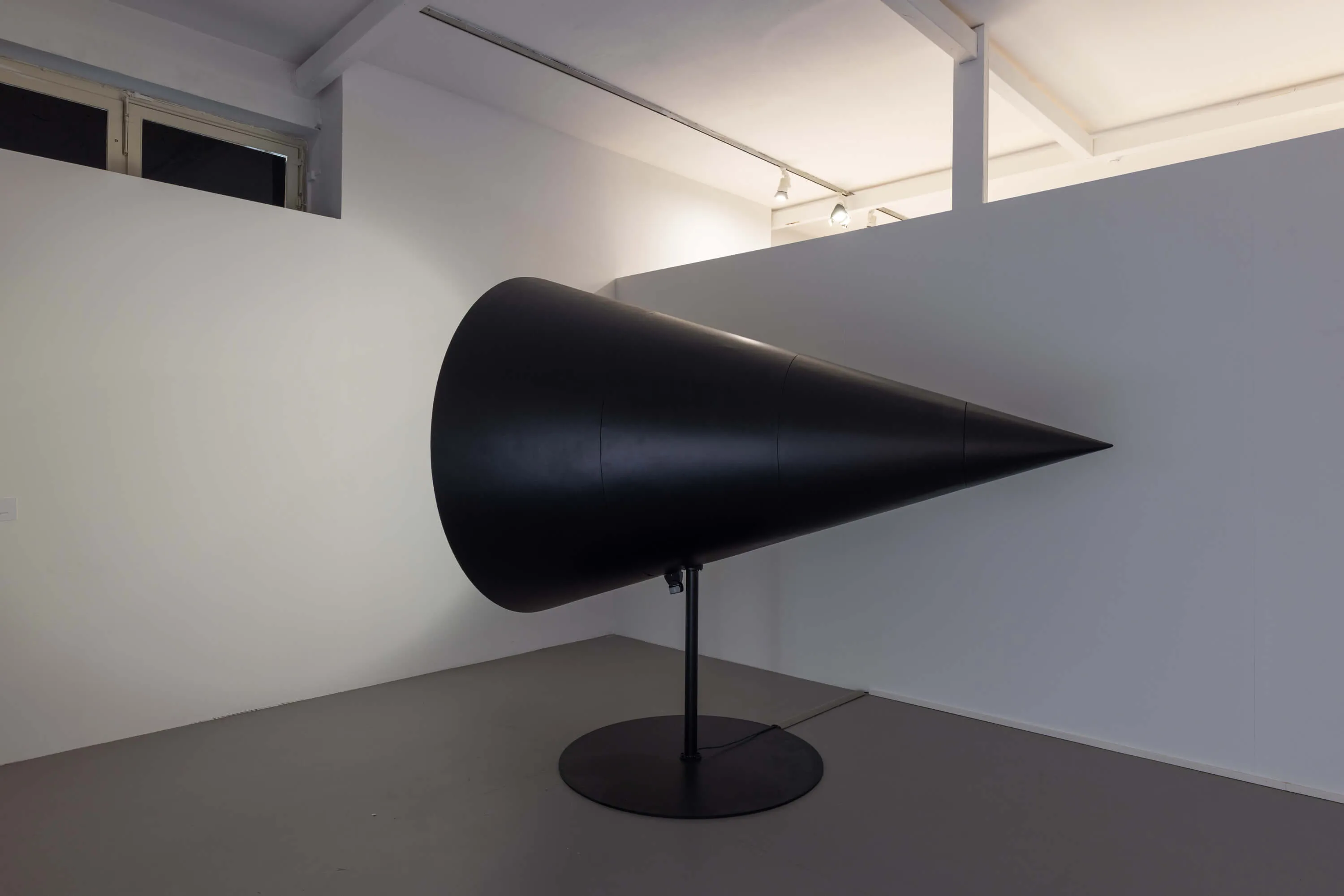Semyon Khanin "Polarcone"

Mixed media, 2025
— What is “Polarcone”?
— It’s a hollow metal cone: black on the outside, white on the inside. The inner part is illuminated and equipped with polarizing filters. These allow us to discern what cannot be seen with the naked eye, but by uncovering a certain image and revealing what is hidden, they also alter our visual perception. We literally start seeing white as black. It is this metaphor, at least partly, that forms the work’s foundation. The polarization of light, like the polarization of opinion, does not allow us to see real processes in their entirety — it places blinders or filters on us. The work isn’t, however, just limited to this metaphor. It’s not only the shape of an object itself, but also light effects, the detection of polarization, and so on, that leave room for further interpretations.
— How did you discover this shape, and how do you interpret it yourself?
— I had come up with the general shape and color of the object a long time ago — a black cone that resembles both a funnel and a horn. When I came around to implementing the idea, I recalled Santiago Sierra’s piece, which is also called "The Black Cone". This marvellous thing was also shown at an exhibition called "No". I like this namesake, but that’s where the overlap ends. The subtitle of Sierra’s work is "Monument to Civil Disobedience" and it’s a twometer high monolith split by a black metal cone, which is displayed in Iceland’s capital to commemorate the Pots and Pans Revolution (the nickname for peaceful protests in Iceland during the 2008–2009 financial crisis). Sierra’s message is perfectly clearcut, even poster-like, visually it seems to refer to El Lissitzky’s "Beat the Whites with the Red Wedge".

"Polarcone" is a more melancholic artwork. It doesn’t bear such a straight-forward message, since the piece deals with the challenges of delivering a message and having it properly received. We take a look inside, get to the root of the matter, trying to distinguish white from black and light from darkness. Polarizing filters allow us to see certain things, but obscure others. This ambiguity is also part and parcel of our ability or inability to process information. Our brain picks out those fragments that we already have some notions about, but leaves out anything that could change our understanding of what’s happening. It’s a funnel that sucks us in.

Semyon Khanin is a Latvian artist and poet who writes in Russian. He’s a member of the art collective Orbita. The most important direction of his artistic practice is work with urban space. His first project in that area was a map of the non-existent Riga metro called "Riga Underground Subway", which he imagined to connect movie theaters with cemeteries. Today, Khanin continues to work on the guerilla art project "Will the Corners Be Named?" The artist gives names to street corners and installs signs on corner houses.
"Corners" echoes some of Khanin’s other works, which create new environments for text to exist in. The artist gives everyday things a new function — a "delivery" of poetic text to the reader. The interactive low-tech object "Poetry-to-go", for example, consists of a few pairs of flip-flops and an inkpad. The sandals leave traces of poetry: one imprint is the original text, and another is its translation.
The work "Poe3D" literally embodies the observation made by avant-garde Russian poet Daniil Kharms that "One should write poetry so that if you throw a poem at a window, the glass will shatter". To begin, Khanin created his first spatial poem — metal tube-shaped words that intersected like a three-dimensional crossword puzzle. Then, he launched the Poe3D website, which allowed users to write similar 3D texts. One of the artist’s latest works is a personal musical instru-ment for poetic performances, which he calls the "khafon".
Semyon Khanin was born in Riga in 1970. His first collection of poetry "Just Now / Tikko"” came out in 2003. In 2011, he compiled an anthology entitled "Latvian/Russian Poetry: Poems by Latvian Poets, Written in Russian". He lives and works in Riga.